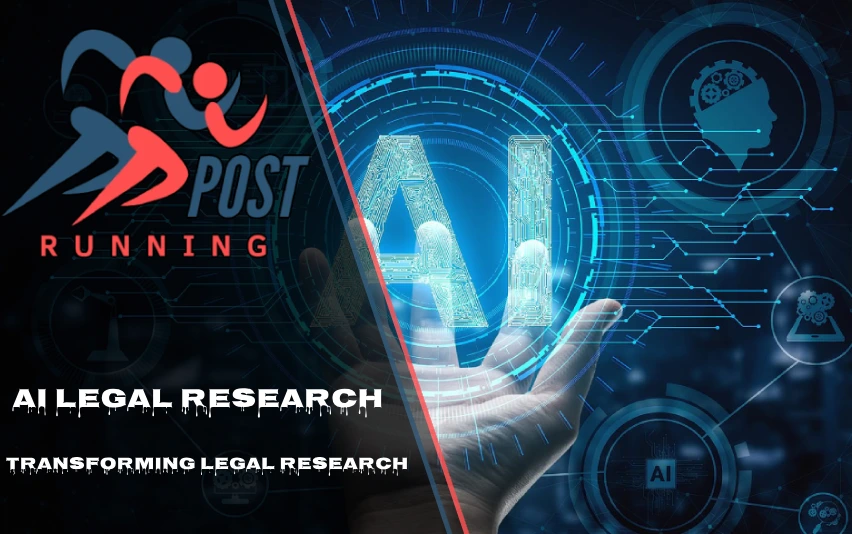Artificial Intelligence (AI) is reshaping the legal landscape, particularly in the realm of legal research and analysis. This technological revolution is changing how lawyers work, making their jobs more efficient and accurate. Let’s dive into how AI legal research is transforming legal research and analysis, exploring its applications, benefits, and potential challenges.
Introduction
The legal profession, often seen as traditional and resistant to change, is experiencing a significant shift thanks to AI. Legal research tools powered by AI are rapidly changing how lawyers practice, offering unprecedented efficiency and accuracy in analyzing vast amounts of legal data. It’s not just a minor improvement – these tools are estimated to save attorneys between 132 and 210 hours annually. That’s a lot of time that can now be spent on more strategic aspects of legal work.
What is AI Legal Research?
Before we go further, let’s break down what AI legal research actually is. At its core, AI legal research involves using advanced technologies like natural language processing (NLP) and machine learning to analyze legal documents, case law, statutes, and regulations. These aren’t your average search tools. They can quickly process and extract relevant information, identify patterns, and provide insights that would take human researchers significantly longer to uncover.
Think of it like having a super-smart assistant who can read through thousands of legal documents in seconds, understand the context, and give you the most relevant information. It’s like having a legal library in your pocket, but one that can think and analyze for itself.
Key Applications of AI in Legal Research
Now that we understand what AI legal research is, let’s look at how it’s being applied in the real world.
Automated Document Analysis
One of the most time-consuming tasks for lawyers is sifting through mountains of documents. AI-powered tools are changing this. They can rapidly analyze large collections of legal documents, extracting relevant information and categorizing content within minutes or even seconds. This means lawyers can spend less time on tedious document review and more time on strategic thinking.
Predictive Legal Analytics
AI isn’t just about looking at past and present data – it can also help predict the future. By examining historical legal data, AI tools can provide predictive insights to help legal professionals make informed decisions about case strategies and assess potential outcomes. It’s like having a crystal ball, but one based on data and algorithms rather than magic.
Advanced Legal Search
Gone are the days of simple keyword searches. AI enhances traditional search methods by understanding context and nuance in legal queries, providing more accurate and relevant results from vast legal databases. It’s like having a conversation with your search engine, where it understands what you’re really asking for.
Legal Trend Identification
AI tools can analyze extensive collections of case law and legal commentary to identify emerging legal trends and shifts in judicial interpretation. This helps lawyers stay ahead of the curve and anticipate changes in the legal landscape.
Benefits of AI in Legal Research
The adoption of AI in legal research isn’t just about fancy technology – it’s bringing real, tangible benefits to the legal profession.
- Increased Efficiency: AI-powered platforms can scan through massive legal databases in seconds, saving lawyers countless hours. This means less time spent on research and more time focused on client needs.
- Enhanced Accuracy: AI tools can identify relevant information and uncover hidden patterns within legal data, reducing the risk of human error. This leads to more thorough and reliable research.
- Personalized Research Experience: AI platforms can learn from users’ behavior and preferences to provide tailored search results and recommendations. It’s like having a research assistant who knows exactly how you think and work.
- Simplified Legal Language: NLP algorithms can break down complex legal jargon into simpler forms, making legal terms more accessible to non-legal individuals. This can help improve communication between lawyers and their clients.
Timeline of AI Adoption in Legal Research
The adoption of AI in legal research isn’t something that happened overnight. Let’s look at a timeline of its development:
| Year | Development |
|---|---|
| 2020 | AI begins transforming legal research processes |
| 2024 | Legal AI Software Market estimated at USD 2.19 billion |
| 2025 | Projected productivity boost of up to 30% for law firms using AI-powered legal research tools |
| 2029 | Legal AI Software Market projected to reach USD 3.64 billion |
This timeline shows the rapid growth and adoption of AI in legal research. From its beginnings in 2020 to its projected market value in 2029, it’s clear that AI is here to stay in the legal world.
Challenges and Considerations
While the benefits of AI in legal research are significant, it’s not without its challenges. Here are some key considerations:
- Algorithmic bias: AI systems are only as unbiased as the data they’re trained on. There’s a risk that these systems could perpetuate existing biases in the legal system.
- Data privacy concerns: With AI systems processing vast amounts of legal data, ensuring the privacy and security of sensitive information is crucial.
- Accuracy of AI-generated results: While AI can process information quickly, it’s not infallible. There’s always a need for human oversight to ensure the accuracy of AI-generated results.
- Shifts in legal roles and job market: As AI takes over more routine tasks, there may be shifts in the types of skills needed in the legal profession.
Conclusion
AI is significantly transforming legal research and analysis, offering improved efficiency, accuracy, and insights. It’s changing how lawyers work, allowing them to focus on higher-value tasks that require human expertise. As the technology continues to evolve, it’s likely to become an increasingly integral part of legal practice.
However, it’s important to remember that AI is a tool, not a replacement for human lawyers. The future of legal research lies in the combination of AI’s processing power and efficiency with human legal expertise and judgment. As we move forward, the legal professionals who can effectively leverage AI tools while maintaining their unique human skills will be the ones who thrive in this new landscape.
The transformation of legal research by AI is not just a trend – it’s a revolution that’s reshaping the legal profession. As we’ve seen, it offers numerous benefits, from increased efficiency to enhanced accuracy. But it also comes with challenges that need to be carefully navigated. As AI continues to evolve, so too will its applications in legal research, promising an exciting future for the legal profession.
Discover more fascinating insights—explore Running Posts today.














